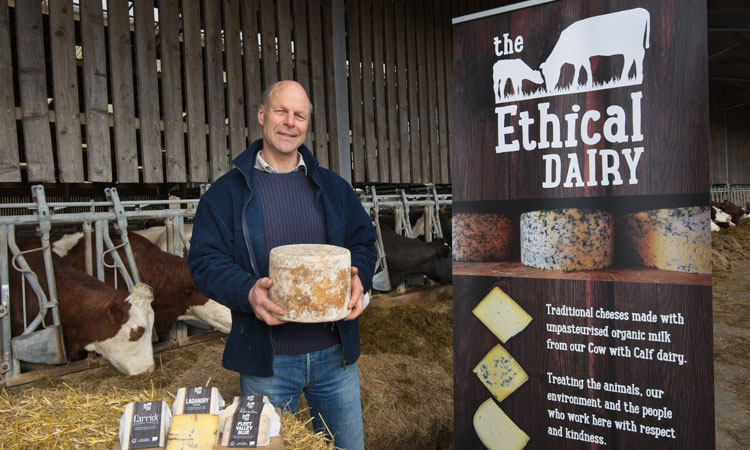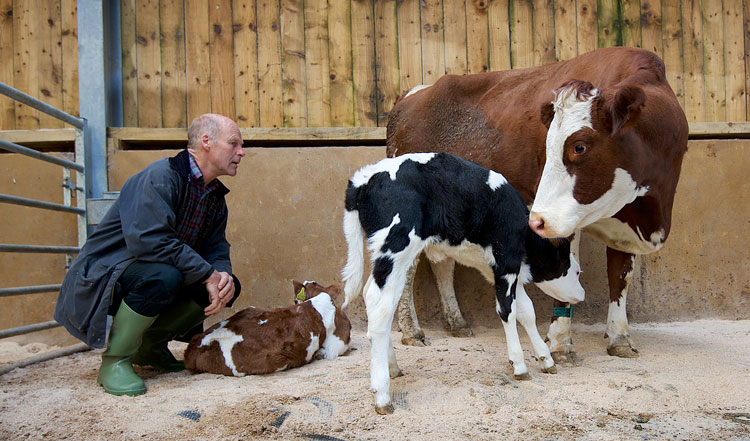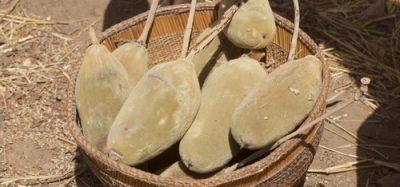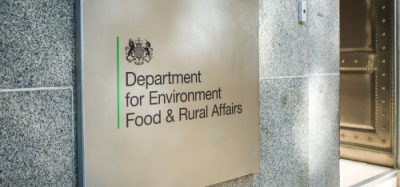Working with nature, not against it
- Like
- Digg
- Del
- Tumblr
- VKontakte
- Buffer
- Love This
- Odnoklassniki
- Meneame
- Blogger
- Amazon
- Yahoo Mail
- Gmail
- AOL
- Newsvine
- HackerNews
- Evernote
- MySpace
- Mail.ru
- Viadeo
- Line
- Comments
- Yummly
- SMS
- Viber
- Telegram
- Subscribe
- Skype
- Facebook Messenger
- Kakao
- LiveJournal
- Yammer
- Edgar
- Fintel
- Mix
- Instapaper
- Copy Link
Posted: 18 September 2023 | David Finlay | No comments yet
Many consider that it is impossible to have plentiful healthy and affordable food that also has high social, environmental and ethical standards. Farmer and Co-owner of The Ethical Dairy, David Finlay, reveals why he no longer believes this to be true.


Credit: David Finlay, The Ethical Dairy
We are now into our seventh year of cow-with‑calf, regenerative, 100 percent pasture-fed, Net Zero, organic dairying. The journey has not been easy or cheap, but there’s no way we would go back. In fact, within the next two years we expect to be at cost‑of‑production parity with conventional organic dairy.
A dairy calf in a conventional rearing system gets fed around 250 litres of formula milk over an eight-week period. In our system, the calves drink 2-2,500 litres of organic milk over an average of five months. As dairy farmers, we are indoctrinated to believe that the next litre of milk is the most profitable, so I understand the economics of our system sounds difficult to believe.
Yet we have found that the more we work with nature, the more we align our management to natural systems and natural instincts, then the more generous nature is towards us.
A farming sea change
When we started transforming our farm around twenty-five years ago, I would have scoffed at the idea of leaving the dairy calves with their mums. The first step on our farming transformation was conversion to organic, and it was economic motivations – not moral or ethical – that drove that decision, but the change we saw on our farm was remarkable.
Ten years after we stopped drenching our pastures in chemicals, we saw pasture yields recover as our soil’s biological health began to actively feed the increasingly biodiverse plants in our pastures. We saw green dock beetles and their larvae controlling the docks (common prevalent weeds), dung beetles breaking up and cycling the nutrients and carbon in the dung deposits, and the clovers increased dramatically, ramping up productivity.
At around the same time that we converted to organic, we opened our farm up to members of the public, offering regular farm tours. Having diversified into ice cream production and tourism, many of our farm tour visitors were mothers with young children, many of whom had personal experience of breastfeeding.
Visitors happily engaged with our activities on the farm with little adverse comment, except for during one aspect of the tour: the visit to the calf house.
Cow and calf separation is standard practice in the dairy industry but this was not widely known by the general public back then. The strength of reaction from our visitors to this standard dairy farming practice gave us food for thought.
We had seen productivity soar by leaning into natural biological process on the land, so could we do the same thing with our animals? If we could give them a more natural, less stressful life, would they repay us with better health and productivity outcomes? There was only one way to find out.
We had seen productivity soar by leaning into natural biological process on the land, so could we do the same thing with our animals?
We needed a new dairy, as our old shed was simply no longer fit for purpose; so we explored ways to incorporate facilities for a suckling system into a new build. In 2012 we trialled cow-with-calf dairying with 37 cows and their calves. It was horrendous.
Six months of problem upon problem, combined with hardly any milk in the tank, nearly bankrupted us. I pulled the plug and we walked away feeling somewhat relieved. We had given it our best shot and it clearly didn’t work. Except… beneath all the problems there was a rightness to seeing the calves and cows together.
Giving nature time
We acknowledged that our expectations of change had been unrealistic. Previously, we had been used to intervening and expecting instant results, but biological systems simply don’t work like that; they need time. And it’s not a simple matter of leaving cows with their calves. That pleasant experience is the icing on the cake, but cow-with-calf ecological dairying is a system. It requires system change not least a change in management mindset.


We committed to cow-with-calf permanently in 2019 and we are seeing year-on-year productivity increases. [Credit: David Finlay, The Ethical Dairy]
The cow and her calf are part of a complex ecological interaction of carbon, nutrients, insects, wild mammals, microbes and us. Once we learn to stop interfering in these natural processes and instead learn to better understand and facilitate them, we can begin to harness the power of nature. It can take years to realise results, but when they do come, those results can not only be better, but far less harmful to the land, the environment, the animals and, ultimately, to us.
The first trial taught us enough to redesign our approach completely. In late 2016 we committed to a three‑year pilot across the whole herd (around 120 milkers). We publicly ‘launched’ our new system in 2018 and were overwhelmed by the public response. We committed to cow-with-calf permanently in 2019 and we are seeing year-on-year productivity increases.
The method (in the madness)
So how does it work as a business? Our nature-based approach has cut inputs and therefore costs. Previously, every year we used to expend more than 100 tonnes of soluble fertilisers, 75 tonnes of lime; several thousand litres of weedkiller and hundreds of doses of worm drench; hundreds of doses of antibiotic and vaccines and 240 tonnes of purchased and mineralised cereal and soya stock feed. Current prices for those inputs that we no longer need are shooting up. In total, those inputs we’ve cut from our system would cost over £100,000.
On top of that, the calves are now growing at more than twice the rate of when we were bucket rearing them. And since we no longer bucket feed calves, we need fewer staff, so our staffing costs have also reduced.
Additionally, the cows are milking really well, giving a total of 5,500 – 6,000 litres a year, and that amount is still increasing. Undoubtedly the suckling and the low stress environment is stimulating milk production.
It can take years to realise results, but when they do come, those results can not only be better, but far less harmful to the land, the environment, the animals and, ultimately, to us.
From a business perspective, the model is resource efficient and financially resilient. Dairy industry economists generally believe that to be economic you need at least 300 cows. Yet we are making a dairying system work on a tenanted farm, employing three full time people, with only 125 cows. The economics work despite the fact that the calves are drinking a third of our organic milk! If we can do it, others can too. The number of farmers and policy makers now visiting our farm suggests that people are starting to take this approach seriously.
As we gradually increase the number of cows in our milking herd, as more of the calves who were born into this cow‑with-calf system reach maturity, we expect to get our cost of production down to 45 pence per litre. That will take us another couple of years, and that’s where my ‘within two years’ claim comes from.
The world is changing very quickly, and our food systems must become more resilient so that we can continue to nourish our population without wrecking the planet further. I believe very strongly that nature-based farming systems are the best way to do this.
The productivity of nature-based farming does not happen quickly, it takes time to bed in because it takes time for the soil to heal. This means there is a very urgent need for governments to incentivise widescale farming system transformation to regenerative approaches now.
The best time to transition to regenerative agriculture was 20 years ago. The second-best time is now. For the sake of our planet and our population, there is no time to lose.
About the author
David Finlay is a farmer and Co‑owner at The Ethical Dairy.
Related topics
Environment, Natural, Research & development, Sustainability









